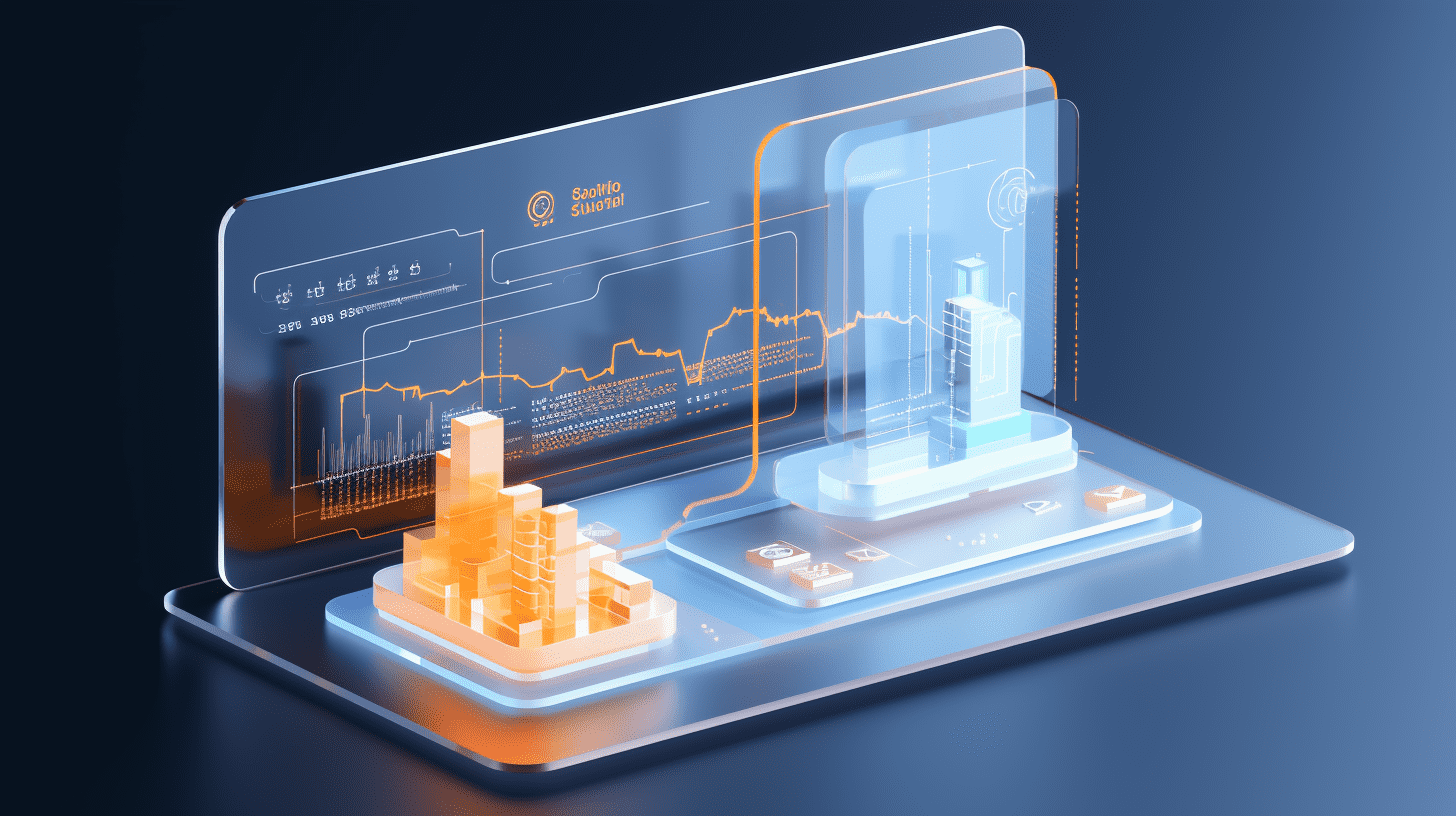China Passenger Car Association: Preliminary statistics show that the retail sales of passenger cars in January were 1.853 million, a year-on-year decrease of 9%.
According to preliminary statistics from the China Passenger Car Association, from January 1st to 31st, the retail sales of passenger cars in the market totaled 1.853 million units, a year-on-year decrease of 9% compared to the same period last year, and a decrease of 30% compared to the previous month.
In January, passenger car retail sales in the national market gradually strengthened.
During the first week of January, the average daily retail sales of passenger cars were 39,000 units, a year-on-year decrease of 28% compared to January last year, and a decrease of 38% compared to the previous month.
During the second week of January, the average daily retail sales of passenger cars were 48,000 units, a year-on-year decrease of 16% compared to January last year, and a decrease of 35% compared to the previous month.
During the third week of January, the average daily retail sales of passenger cars were 67,000 units, a year-on-year increase of 9% compared to January last year, and a decrease of 21% compared to the previous month.
During the fourth week of January, the average daily retail sales of passenger cars were 77,000 units, a year-on-year increase of 15% compared to January last year, and a decrease of 20% compared to the previous month.
During the fifth week of January, the average daily retail sales of passenger cars were 65,000 units, a year-on-year decrease of 28% compared to January last year, and a decrease of 38% compared to the previous month.
Preliminary statistics show that from January 1st to 31st, the retail sales of passenger cars in the market were 1.853 million units, a 9% decrease compared to January last year, and a 30% decrease compared to the previous month; the total retail sales since the beginning of the year were 1.853 million units, a 9% decrease year-on-year.
Due to the national scrappage and vehicle replacement policies supported by central funds in various regions in 2024, the car purchasing consumption in December 2024 achieved strong growth. The government's scrappage and vehicle replacement policy from 2015 to 2020 was successful in promoting the turnover of vehicles, but consumers were still cautious and waiting for more benefits from the policy. With the announcement of new subsidy policies for 2025, consumer confidence improved slightly, and demand for new cars gradually increased from the second week, showing stronger trends in the third week.
On January 8th, the National Development and Reform Commission and the Ministry of Finance issued a notice on implementing large-scale equipment renewal and consumer goods replacement policies in 2025. The policy improved the subsidies for replacing and renewing cars. Individual consumers who transfer the registration of a passenger car in their name and purchase a new car are eligible for subsidies. The subsidy for purchasing a new energy passenger car is up to 15,000 yuan per unit, and for purchasing a fuel passenger car, it is up to 13,000 yuan per unit. The current policy aims to replace the peak inventory of fuel vehicles from 2015 to 2020, and the short time frame in the second half of 2024 is not enough to exhaust the large number of vehicles. Recently, local governments have clarified the new subsidy policy for vehicle replacement in advance to stabilize consumer sentiment and achieve sustainable consumption. The 2024 vehicle replacement policy was actually the strongest subsidy incentive, prompting more consumers to purchase cars before the holiday and enjoy maximum benefits, leading to overall strong car retail sales in the third and fourth weeks. Despite entering the Spring Festival in the fifth week, retail sales remained strong.
In January 2025, the overall sales volume of passenger car manufacturers nationwide was good.
During the first week of January, the average daily wholesale sales of passenger car manufacturers were 59,000 units, a 26% increase compared to January last year, and a 16% decrease compared to the previous month.
During the second week of January, the average daily wholesale sales of passenger car manufacturers were 56,000 units, a 6% increase compared to January last year, and a 27% decrease compared to the previous month.
During the third week of January, the average daily wholesale sales of passenger car manufacturers were 74,000 units, a 32% increase compared to January last year, and a 15% decrease compared to the previous month.
During the fourth week of January, the average daily wholesale sales of passenger car manufacturers were 75,000 units, a 19% increase compared to January last year, and a 36% decrease compared to the previous month.
During the fifth week of January, the average daily wholesale sales of passenger car manufacturers were 65,000 units, a 46% decrease compared to January last year, and a 55% decrease compared to the previous month.
Preliminary statistics show that from January 1st to 31st, the wholesale sales by passenger car manufacturers nationwide were 2.048 million units, a 3% decrease year-on-year, and a 33% decrease compared to the previous month; the total wholesale sales since the beginning of the year were 2.048 million units, a 3% decrease year-on-year.
In 2024, the revenue of the automotive industry exceeded 10 trillion yuan, with a 4% increase, while costs increased by 5% and profits decreased by 8%. However, profits from lithium batteries increased by 48.5%.In 2023, the revenue of the automotive industry was 623 billion yuan, a decrease of 8% compared to the previous year; the profit margin of the automotive industry was 4.3%, which is still relatively low compared to the average profit margin of 6% in downstream industries. The revenue of the automotive industry in December was 1,190.9 billion yuan, an increase of 13% year-on-year; costs were 1,035.2 billion yuan, an increase of 15%; profits were 49.1 billion yuan, a decrease of 13.5% year-on-year; and the profit margin of the automotive industry was 4.1%. By 2024, the profits of the lithium-ion battery manufacturing industry are expected to increase by 48.5%. The automotive industry needs to effectively reduce costs and increase efficiency, and further enhance cost control measures.In 2024, the production and sales of the automotive industry from January to December improved, but profits plummeted by 13.5% due to intense competition. Profits mainly rely on exports and profits from the upstream industry chain. New momentum continues to be nurtured and strengthened, with battery companies seeing a profit growth of 48.5%. While some companies saw significant profit declines, others are facing increased pressure for survival.
Although profits of industrial enterprises above a certain scale are still in a declining range, the narrowing of profit declines continues as the effects of policy combinations continue to manifest. The profitability situation has improved slightly. In the next phase, more effective cost reduction and efficiency improvement are needed. However, inadequate domestic demand continues to restrict the continuous improvement of enterprise profitability, while the challenging and complex international environment increases pressure on enterprise operations. The foundation for the recovery of industrial enterprise profitability still needs to be consolidated. The profits of traditional fuel vehicles are still marginal, but the market is shrinking rapidly, leading to severe losses for some companies. New energy vehicles are experiencing high growth but also significant losses, creating a significant contradiction between the high profits of batteries and the losses in overall vehicle production. Therefore, the central and various levels of government are actively stabilizing fuel vehicle consumption and promoting stronger implementation of scrappage and replacement policies, hoping that equal rights for fuel and electric vehicles can drive equal strength, leading to continuous stabilization and improvement in the overall situation of the automotive industry in the future.
Recommendation to reduce discriminatory policies against traditional fuel vehicles and achieve "equal strength for fuel and electric vehicles"
As the trend of the world energy revolution continues to evolve, the theory of "world oil depletion" is outdated, and the energy and environmental strategies of the Trump administration in the United States have a huge impact on the world. China has tremendous export potential for automobiles and needs to maintain the basic market size for traditional fuel vehicles to stabilize the fuel vehicle industry chain and achieve "equal strength for fuel and electric vehicles", ensuring the export advantage and sustainability of Chinese automobiles. It is suggested to reduce discriminatory policies against traditional fuel vehicles and achieve "equal strength for fuel and electric vehicles".
In the discussion of energy, the theory of the "world oil depletion" once caused global energy crisis fears. However, upon further investigation, it is found to be flawed and incorrect. Based on oil reserves data, the report released by the Norwegian Rystad Energy shows that the global recoverable oil reserves are approximately 1.572 trillion barrels, far exceeding the 6.826 trillion barrels in 1980. In recent years, PetroChina has discovered a super-deep oil and gas field with reserves of up to 10 billion tons in the Tarim Basin and a new shale oil field with reserves exceeding 10 billion tons in the Inner Mongolia Erdos Resources Basin. These increasing reserves indicate that oil is not on the verge of depletion as predicted by the theory of depletion.
In December 2024, China's automobile exports reached 570,000 units, with a year-on-year growth rate of 25% compared to December 2023 and a month-on-month growth of 5%, showing an improvement in the year-on-year and month-on-month trends. Throughout the year, China's automobile exports reached 6.41 million units, with a 23% growth rate. In December 2024, the export volume of new energy vehicles was 150,000 units, a year-on-year increase of 7% and a month-on-month increase of 12%. Throughout 2024, the cumulative export volume of new energy vehicles reached 2.01 million units, a 12% year-on-year growth. In 2024, China's conventional fuel vehicle models exports reached 4.4 million, a growth rate of 26%, with fuel vehicle exports reaching 420,000 units in December, a 31% increase. In 2024, China's pure electric vehicle exports reached 1.7 million, a 6% increase, with pure electric vehicle exports reaching 120,000 units in December, a 4% increase, showing a significant slowdown in the growth rate compared to 2023. In 2024, Shanxi Guoxin Energy Corporation's plug-in hybrid vehicle exports reached 320,000 units, a 128% increase, with plug-in exports reaching 32,000 units in December, a 59% increase.
In 2025, as new energy vehicles have become the main force in passenger cars, it is necessary to promote equal strength for fuel and electric vehicles.
A. Fair taxation: Gradually adjust tax policies to reduce the tax differences between traditional fuel vehicles and new energy vehicles. For example, the purchase tax and vehicle tax for traditional fuel vehicles can be appropriately reduced, or reasonable adjustments can be made to the tax incentives for new energy vehicles to create a more level playing field in the market. Consider establishing tax standards based on the actual energy consumption and emissions of vehicles, rather than solely dividing them into traditional fuel vehicles or new energy vehicles.
B. Remove unreasonable restrictions on traditional fuel vehicles: In terms of traffic management, eliminate unreasonable restrictions on the use of traditional fuel vehicles, such as restrictions on when they can be on the road. Traditional fuel vehicles contribute significantly to road taxes but are constrained from being on the road during certain periods, which is a form of discrimination against traditional fuel vehicles. Traffic congestion can be alleviated by adopting more scientific traffic management tools, such as intelligent transportation systems, based on the actual traffic conditions of the city, rather than restricting traditional fuel vehicles. Especially since many cities have seen significant improvements in congestion recently, with a shrinking urban population.
C. Unified environmental and credit control standards: Establish unified environmental standards for traditional fuel vehicles and new energy vehicles. Strengthening environmental monitoring for traditional fuel vehicles while also addressing environmental concerns such as battery recycling and production processes for new energy vehicles to ensure that both meet the necessary standards. The technical control measures for traditional fuel vehicles are overly stringent, while there are significant loopholes in the credit control for new energy vehicles, which should be effectively addressed.
D. Encourage technological advancements for traditional fuel vehicles: Invest more in research and development for traditional fuel vehicles, promote energy-saving and emission reduction technologies to improve fuel efficiency and reduce emissions. Encourage vehicle manufacturers to develop more advanced engine technology and hybrid technology to enhance the performance and environmental friendliness of traditional fuel vehicles.
E. Consumer education: Strengthen consumer education to increase awareness among consumers about traditional fuel vehicles and new energy vehicles, enabling consumers to make rational choices based on their actual needs and usage scenarios. Through promotion and education, eliminate misunderstandings and concerns about new energy vehicles among consumers, while also informing consumers about the technological advancements and advantages of traditional fuel vehicles.
F. Improve market mechanisms: Establish a competitive mechanism in the automotive market, strengthen market supervision, and prevent unfair competition practices. Ensure that traditional fuel vehicles and new energy vehicles can compete fairly in the market and that companies can choose to develop traditional fuel vehicle or new energy vehicle technology routes independently based on market demand and their own advantages.
5. National passenger car market inventory at the end of December 2024 was 3.05 million units, with a stock duration of 59 days.
This year, the national passenger car market is still in a strong destocking cycle, starting from the beginning of the year and continuing until August, with destocking efforts from September to December.In the stage of passive destocking. After the expected stimulus policy has brought about a decline in wait-and-see attitude and the policy of trading in old for new has stimulated consumption in various regions, manufacturers in December stabilized production to cope with market risks, and the trend of new energy vehicles in December was good. At the end of December 2024, the national inventory of passenger cars was 3.05 million vehicles, a decrease of 150,000 vehicles from the previous month, and a decrease of 760,000 vehicles from December 2023, and a decrease of 530,000 vehicles from December 2022. The current policy withdrawal has led to overall caution among manufacturers, and production is relatively slowing down before the end of the year. The overall caution among manufacturers is due to the sluggish traditional fuel vehicle market, and production is still significantly contracting before the year-end sprint. Since the sales forecast for January to March 2025 is lower than the average of December 2024 to February 2025, the existing inventory support for future sales days at the end of December 2024 is estimated to be 59 days, a significant decrease compared to 76 days in December 2022 and 70 days in December 2023, indicating that the overall inventory pressure is not significant.Je veux apprendre parler couramment anglais.
Related Articles

Open Source Securities: Changes to this round of spring excitement after 8 consecutive gains

Big "Picture" 2026: A sneak peek at the top ten industries in the future.

Has the market structure of the HBM changed? Nvidia's Rubin expects shipments to increase, and storage giants are competing in a game of "chasing each other".
Open Source Securities: Changes to this round of spring excitement after 8 consecutive gains

Big "Picture" 2026: A sneak peek at the top ten industries in the future.

Has the market structure of the HBM changed? Nvidia's Rubin expects shipments to increase, and storage giants are competing in a game of "chasing each other".

RECOMMEND

Not Just “Power Shortages,” Delays Will Become The Key Theme For U.S. Data Centers In 2026
26/12/2025

Hang Seng Index Rises 33% This Year, Best Five‑Year Performance; Multiple Institutions Forecast Breakthrough Above 30,000 Next Year
26/12/2025

Gold Rally Has Further To Run, JPMorgan Bullish: Prices Could Reach USD 5,055 By Year‑End 2026
26/12/2025


